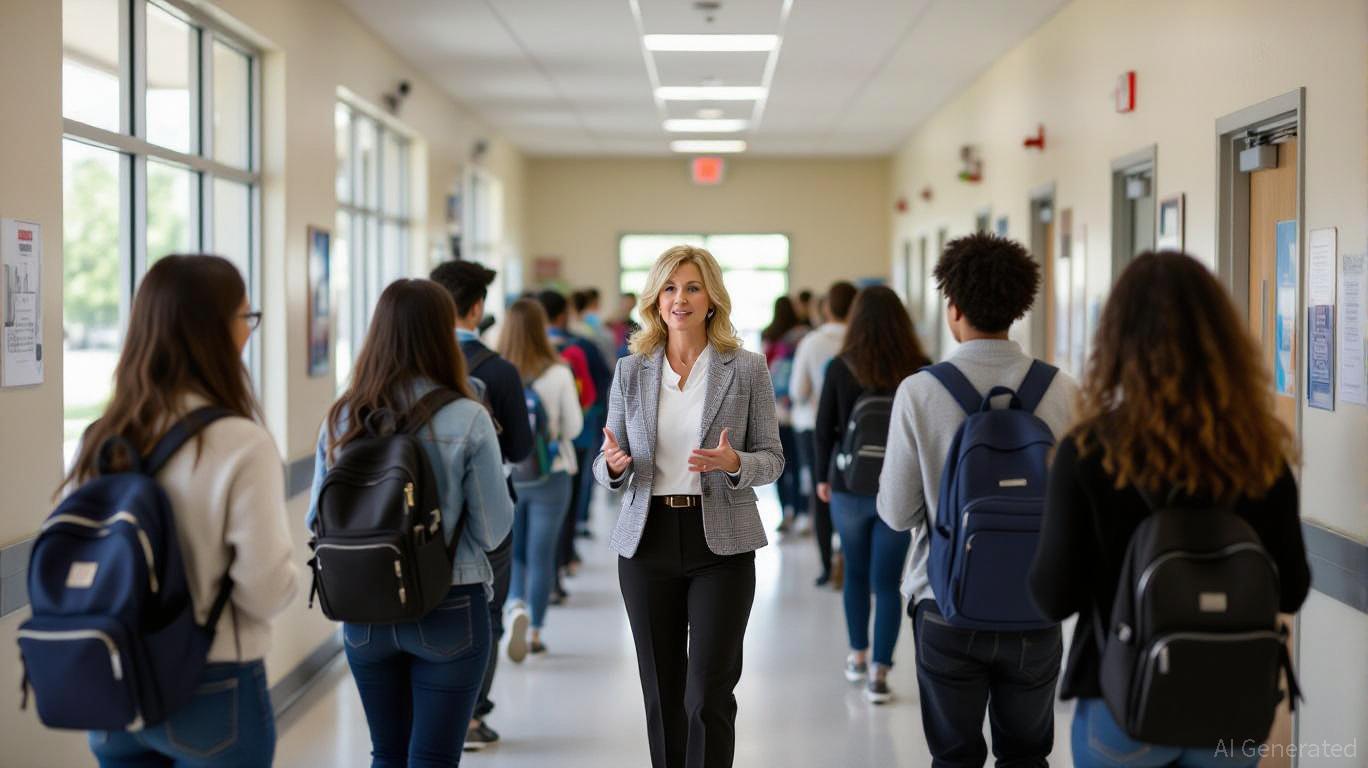Education Sector Prospects within School Counseling Facilities
- U.S. schools face a crisis with student-to-counselor ratios averaging 376:1, far exceeding ASCA's 250:1 standard, straining mental health support and academic guidance. - Federal and state policies are shifting to address gaps, with California allocating $1.7B for counseling expansion and Texas revising funding for CTE/special education. - Education tech innovations like AI tools and digital platforms are emerging as solutions, with 40% of states adopting AI procurement guidance to automate administrativ
Capacity Crisis: Disproportionate Student-to-Counselor Ratios
The statistics are sobering. In 2025, more than 56% of school counselors are responsible for caseloads above 300 students, with
Policy Momentum: Shifts in Federal and State Funding

State initiatives are showing more stability. California’s 2025–26 budget features a $1.7 billion Student Support and Professional Development Block Grant,
Edtech Solutions: Innovation and Investment Prospects
Education technology is becoming a vital tool for bridging gaps in counseling infrastructure. Although detailed company data for 2025 is limited,
Investors should also look at platforms that manage devices and monitor student well-being. As
Sustained Investment and Long-Term Impact
Long-term research supports the value of improving counselor-to-student ratios. In Florida, institutions such as Florida Gulf Coast University (FGCU) have grown their school counseling programs,
Key Investment Strategies
- Edtech Platforms: Focus on AI-based tools that automate administrative tasks, screen for mental health needs, and provide tailored student support. States like California and Texas, with forward-thinking funding, offer strong markets.
- Support Services for Schools: Back companies that offer training, recruitment, and retention solutions for counselors. Collaborations with universities (such as FGCU’s approach
doubling the number of graduates since 1997) can help scale these efforts.
- State-Driven Reform Programs: Target states with reliable funding streams, such as California’s LCFF and ELO-P
giving districts full autonomy, or Texas’s HB2updated its Foundation School Program. These policies ensure steady demand for counseling services.
Potential Risks and How to Address Them
The main concern is the expiration of federal pandemic relief funds, such as ESSER, which have
Conclusion
The current crisis in school counseling infrastructure presents an investment opportunity exceeding $10 billion for those who align with policy trends and technological advancements. By focusing on edtech, state reforms, and support services, stakeholders can address persistent gaps and benefit from a sector on the verge of major change. As the 2025–26 school year approaches, the message is clear: invest in solutions that lower counselor ratios, improve mental health, and strengthen the future of public education.
Disclaimer: The content of this article solely reflects the author's opinion and does not represent the platform in any capacity. This article is not intended to serve as a reference for making investment decisions.
You may also like
As cryptocurrency fraud becomes more sophisticated, Interpol strengthens its unified crackdown
- Interpol labels crypto scam networks a global threat, citing $11B in cross-border fraud since 2023. - Scam compounds use forced labor and blockchain tech to evade detection across 60+ countries. - 2024 operations achieved 2,500 arrests, but networks persist in Southeast Asia and expand globally. - Finland's caller ID tech reduced scam losses by 99.9%, highlighting tech-innovation's role in combating fraud.

Dogecoin News Update: DOGE ETFs Ignite Surge, Yet Price Falls Back Under Key Support Level
- Dogecoin (DOGE) breaks below $0.15 support, hitting $0.138 amid algorithmic/institutional selling and 263% volume surge. - Price collapse coincides with broader crypto weakness, as Bitcoin/Ethereum drop over 9-10% and market cap falls $120B. - ETF launches (GDOG) briefly boost DOGE 3% to $0.145 but fail to counter sustained bearish momentum below key moving averages. - Critical $0.143 support and $0.1489 resistance levels now pivotal, with analysts warning of further declines below $0.135 if institutiona

The Rezoning of the Xerox Campus: Effects on Property and Infrastructure Investments in Webster, NY
- Webster , NY's Xerox Campus rezoning under the BOA program transforms a 569-acre industrial site into a mixed-use hub for economic growth and environmental remediation. - $9.8M infrastructure upgrades including road and energy modernization aim to position the area as a competitive logistics and advanced manufacturing hub near the U.S.-Canada border. - Residential property values rose 10.1% YoY to $317,000, driven by mixed-use zoning that integrates residential, commercial, and industrial development. -

The Federal Reserve’s Change in Policy and How It Affects Blockchain-Based Assets Such as Solana
- Fed's 2025 dovish pivot (rate cuts, QT end) boosted liquidity for blockchain/DeFi, driving Solana's TVL to $35B and DEX volumes to $3.65B. - Institutional capital shifted to Solana's staking rewards amid low-yield alternatives, amplified by $30B stablecoin inflows post-GENIUS Act. - Macroeconomic volatility exposed fragility: Solana's TVL dropped 4.7% in October 2025 amid inflation/labor market uncertainties. - VC funding reallocated to mature blockchain projects ($4.59B in Q3 2025), prioritizing infrast
